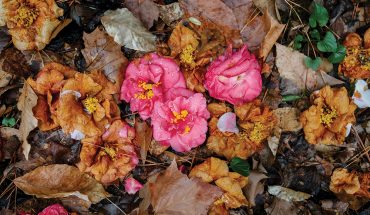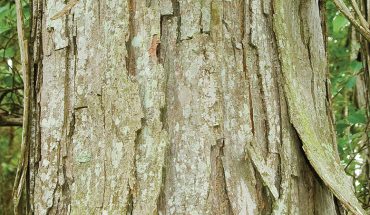As told to Catherine Currin | photography by Juli Leonard

Helen Yoest knows her way around a garden. A North Carolinian since 1988, Yoest says she couldn’t be happier with the terroir of the Old North State. She began her career as an air pollution engineer, and is the founder and current director of nonprofit Bee Better, which encourages backyard planting for wildlife and ecosystem benefits. Yoest is also a gardener at Fearrington Village in Chapel Hill, as well as a a guest columnist for Country Gardens magazine, has written three books, and is the recipient of the 2015 City of Raleigh Sustainability award. Intrigued by the bonafide garden expert, WALTER visited her garden to learn Yoest’s green thumb secrets.
You’ve been gardening for decades now! What initially sparked your interest?
My love of gardening is an extension of my desire to be outdoors. Gardening is my sport, my church, my refuge. There is no problem I can’t solve by being outside with nature all around me. As a child growing up on the coast of Virginia, there was always something to explore. It’s the same in North Carolina.
Why is North Carolina an ideal spot for gardening?
Well, I can’t answer for all of North Carolina, but the Piedmont and Coastal regions have so much going for them. Where to begin: we can garden year round and after our first frost, we are also tick and mosquito free! If you don’t like our heat and humidity, there are a full nine months to build the garden to suit your best season. The Triangle area is a horticultural hub! We have three of some the world’s most respected botanical gardens, including Duke Gardens, JC Raulston Arboretum, and the North Carolina Botanical Garden.
N.C. State is one of the best universities producing the next generation of horticulturists and landscape architects—many of these graduates stay in our area and create world-renowned businesses like Hoffman Nursery, or run garden centers like Garden Supply in Cary. Speaking of Garden Supply, they are a good example of garden centers doing so much more than selling plants. Other garden centers have branched out to be more than a garden destination, such as Atlantic Gardening Company, with a friendly bar selling local craft beers. Garden centers are also great places to go for seasonal holiday decorating.

Tell me more about the Bee Better garden.
I started the nonprofit Bee Better in 2016 to help homeowners build better backyards for birds, bees, and butterflies. Our focus is on the plants. Many homeowners express interest in wanting to help the bee or the monarchs or some other celebrity insects. If we gardened more sustainability, we can save even more species. We don’t need to keep bees to help the bees—instead, plant the pollen and nectar-rich plants that satisfy their needs. For example, there is such an emphasis on native plants, but since the European honeybee isn’t native to North Carolina, they have adapted to plants native to their origin of species. We help teach homeowners to plant the best flowers for their allowed space that will benefit the European honeybee that are also not invasive. Same with the butterflies. It’s wonderful to have beautiful flowers, but if you are trying to fully sustain the life-cycle of the butterfly, one needs a diversity of plants, and most certainly a host plant on which to lay their eggs, so the caterpillar stage can feed.
What prompted you to branch out into growing microgreens? Where do you sell them?
As a gardener at Fearrington Village, we would buy our microgreens from a local grower. As she was winding down towards retirement, she gave the culinary gardener and me the opportunity to learn how to grow our own for the restaurant.
As I began to learn the nutrient benefits of microgreens, I was hooked. While their nutrient contents vary slightly from one type to another, most varieties are rich in potassium, iron, zinc, magnesium, and copper. Microgreens are also a great source of beneficial plant compounds like antioxidants. The concentration level of these nutrients is much higher than when the plant is mature. I realized that Raleigh didn’t have a reliable source of locally grown microgreens, so I branched out to serve the Raleigh market.
While my family benefits from these nutrient flavors, I cater to Fearrington Village and it is my hope to soon sell to some of the leading chefs in the Raleigh area. They are locally grown and freshly cut for a weekly delivery. I sell to individuals, particularly vegetarians and vegans, who understand the value of added nutrients, as well as anyone wanting to have a better tasting experience.

What are some of your favorite plants native to the area?
Cardinal flower, Lobelia cardinalis, as a hummingbird favorite. Coneflowers, Echinacea spp. for native bees, butterflies, and goldfinches, yaupon holly, Ilex vomitoria, for our winter resident native birds, and milkweed, Asclepias spp., is the only host plant for the Monarch and Queen butterfly. It’s important for me to know and share with others the benefits of native plants for our wildlife, not just because they are pretty.

Most of us can barely keep a succulent alive—what’s your advice to a beginner gardener?
Plants will die and it isn’t necessarily your fault! Know your sun. If the plant tag says shade, full sun will not be suitable, no matter how badly you want it. This may seem logical but it’s a mistake made often, by novices and even experienced gardeners.



